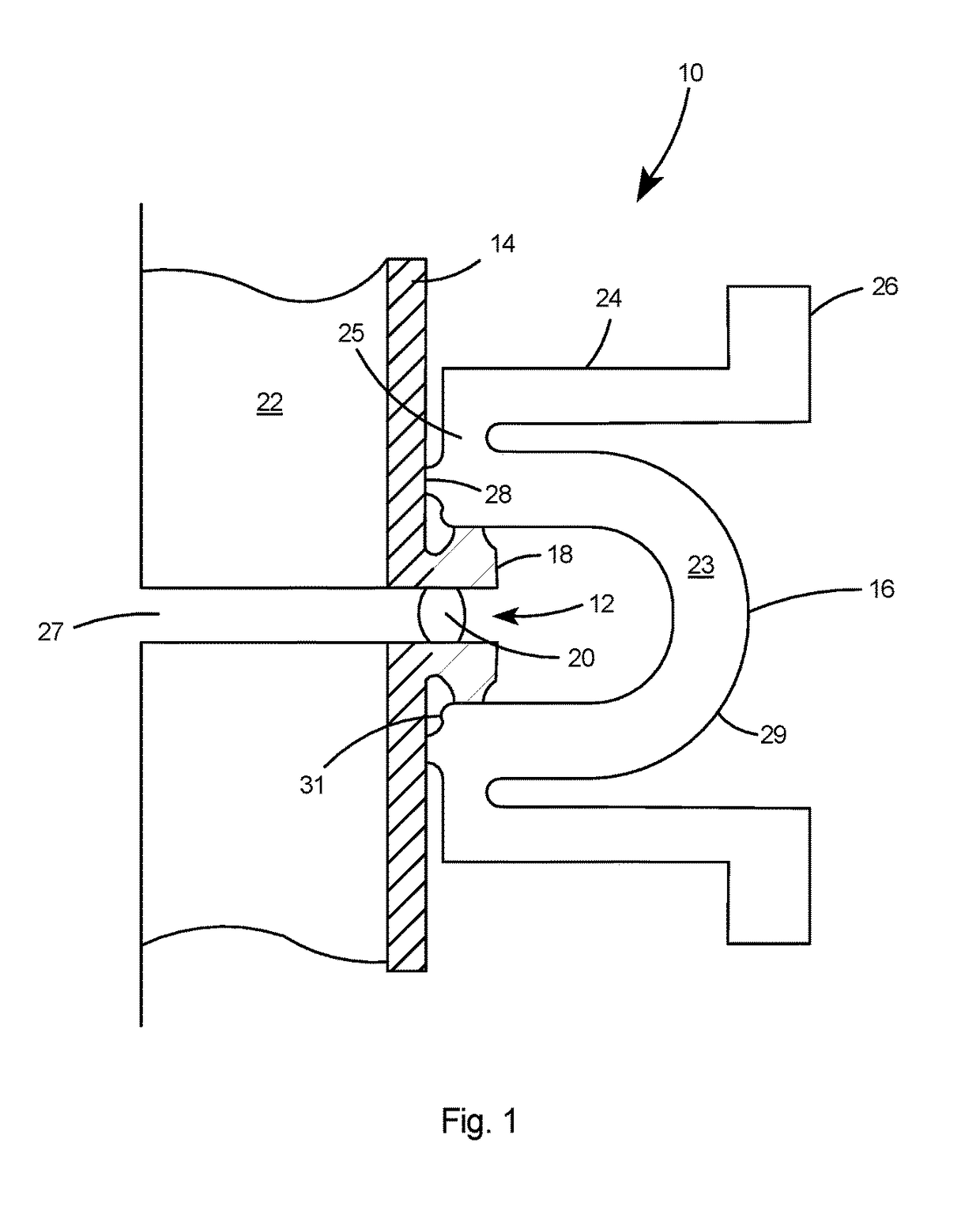Flange joint system for SRF cavities utilizing high force spring clamps for low particle generation
a flange joint and high-force spring technology, applied in the direction of electrical equipment, accelerators, etc., can solve the problems of metal-to-metal contact between the threads of the bolt and the threads of the flange, which can produce microscopic contamination particles, and achieve the effect of reducing the generation of particulates
- Summary
- Abstract
- Description
- Claims
- Application Information
AI Technical Summary
Benefits of technology
Problems solved by technology
Method used
Image
Examples
Embodiment Construction
[0016]With reference to FIG. 1 there is shown a first embodiment flange joint system 10 installed on the flange joint 12 of an SRF cavity 14. The flange joint system 10 includes a set of spring clamps 16 that produce high force on the flanges 18 of Superconducting Radio Frequency (SRF) cavities to squeeze a conventional metallic seal 20. The system establishes the required vacuum and RF-tight seal with minimum particle contamination to the inside 22 of the cavity assembly. The spring clamps are designed to stay within their elastic range while being forced open enough to mount over the flange pair. Upon release, the clamps have enough force to plastically deform the surfaces of the metallic seal 20 and continue to a new equilibrium sprung dimension where the flanges remain held against one another with enough preload such that normal handling of the cavity assembly will not break the seal.
[0017]Preferably, the spring clamp 16 is constructed of a material having a high strength, low ...
PUM
 Login to View More
Login to View More Abstract
Description
Claims
Application Information
 Login to View More
Login to View More - R&D
- Intellectual Property
- Life Sciences
- Materials
- Tech Scout
- Unparalleled Data Quality
- Higher Quality Content
- 60% Fewer Hallucinations
Browse by: Latest US Patents, China's latest patents, Technical Efficacy Thesaurus, Application Domain, Technology Topic, Popular Technical Reports.
© 2025 PatSnap. All rights reserved.Legal|Privacy policy|Modern Slavery Act Transparency Statement|Sitemap|About US| Contact US: help@patsnap.com



